In power systems, transformers are electrical machines used for transferring one form of energy to another form without modifying frequency by stepping up/down the main voltage. Similarly, a transformer that is used to isolate circuits is known as an isolation transformer. The primary voltage value in this transformer will be equivalent to the secondary voltage but the windings in this transformer will have an equal number of turns to balance for losses. These transformers bring a new era for the power generation system. This article discusses an overview of an isolation transformer – working and its applications.
What is Isolation Transformer?
A transformer that is used to transmit isolated alternating current to equipment or device for protection or to decrease the harmonics, as well as transient voltage surges, is known as an isolation transformer. This transformer provides galvanic isolation between the power source & powered device which means there is no conductive lane between the power source as well as the powered device. So that it gives protection to the devices from electric shock & decreases the noise within sensitive devices.
An isolation transformer plays a key role in connecting two different circuits that do not let physical connections. Usually, this transformer does not use for changing the electrical quantities value. So, in a number of cases, this transformer’s turn ratio is one which means the number of windings within the primary winding is similar to the number of windings within secondary windings & it makes equivalent values for the primary & secondary voltage. This transformer helps in protecting sensitive devices like laboratory instruments, medical devices & computers.
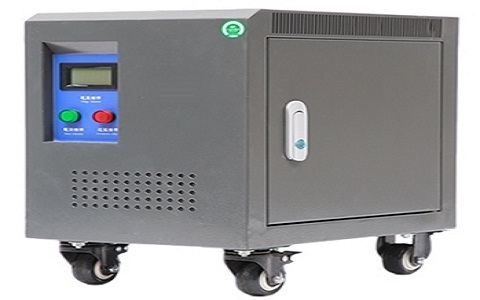
Isolation Transformer
The function of an isolation transformer is to provide the physical & also electrical separation in between two electrical circuits. So it isolates & guards these circuits & people from electrical shock. The main purpose of this transformer is to decrease voltage spikes within the supply lines. In electrical power supply lines, static electricity, a quick voltage change, or Illumination causes voltage spikes, surges & transients. A voltage spike is a quick increase within voltage levels that lasts for a minimum of 3nsec or above.
Isolation Transformer Construction
The construction of the isolation transformer is shown below. This transformer includes primary & secondary windings which are not connected physically but it works on the EMF power principle. This transformer reduces the additional voltage from the load to the supplying side. So this transformer’s winding turns ratio is 1:1.
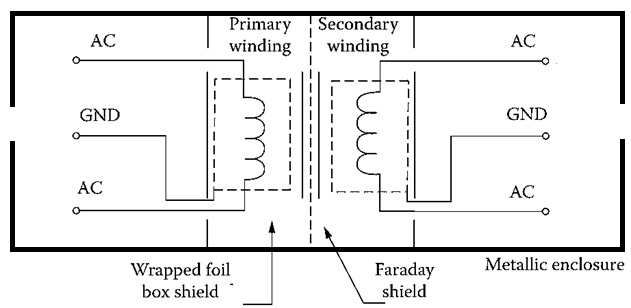
Isolation Transformer Construction
In this transformer, the two winds are separated by the shield. So the primary windings are separated through a wrapped foil box shield and the secondary windings are separated through a Faraday shield. These windings are not allied with a wire. When primary windings were allied to the AC power source then a magnetic field will be created & transmitted to the secondary load that follows the following equation.
Electromagnetic force for this transformer is the fundamental theme due to no physical wire connection through both terminals. The EMF equation helps you know about isolation transformers correctly.
E = N dΦ/dt
E = N x ω x Φmax x cos ωt.
Emax = N ω Φmax
Erms = Nω/√ 2 x Φmax => 2π/√ 2xf x Nx Φmax.
Erms = 4. 4 4 fN Φmax
Here is E∞N
Where:
‘ƒ’ is the flux frequency within Hertz, that is ω/2π.
‘Ν’ is the no. of coil windings.
‘Φ’ is the flux amount within Webers.
The whole system is carried out by a metallic body. A line from the two shields is connected to the GND which is also known as a natural phage connection.
Working
An isolation transformer is a simple transformer with a 1:1 transformation ratio. The primary winding of this transformer is connected to the power source whereas the load which needs to be protected can be connected by the secondary winding. An isolation transformer works by transmitting electrical energy from one electrical circuit to another circuit without needing any physical contact. This transformer works on the magnetic induction principle which utilizes a magnetic field for inducing EMF without affecting the frequency in another circuit.
Types of Isolation Transformers
There are different types of isolation transformers which are discussed below.
Drive Isolation Transformers
Drive isolation transformers are used to power electric motors and also reduce the noise occurred within the input & output coils by using special winding methods as well as insulation materials. This helps in ensuring that electric motors connected to the transformer get clean, reliable power without any fluctuation or interference within voltage. These types of transformers are utilized in a variety of commercial & industrial applications.
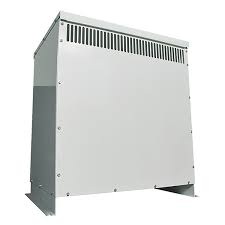
Drive Isolation Type
Constant Voltage Transformers
These transformers are also called CVTs which are used for maintaining a steady output voltage above varying input voltage & also current levels. These transformers work with an autotransformer & feedback circuit for detecting changes within the output voltage & make changes consequently. So that it helps in ensuring that electrical devices which are connected to this transformer get a stable voltage even if fluctuations are there within the i/p voltage.
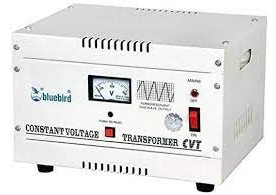
Constant Voltage Transformer
Galvanic Isolation Transformers
The galvanic isolation transformer is used to provide electrical insulation between two circuits or systems. This transformer uses a special winding method to create an isolated circuit that avoids any flow of current throughout the two windings of the transformer. This ensures whole electrical isolation to defend against potential harm caused by electrical surges or noise. These transformers are commonly used in industrial or medical equipment to make sure the maximum levels of security & reliability.

Galvanic Isolation Type
Dry Isolation Transformers
The transformer which uses dry air as an insulator for providing electrical isolation between two circuits is called a dry isolation transformer. These transformers utilize a special winding method as well as insulation material to avoid the current flowing throughout the primary as well as secondary coils. So it helps to ensure complete electrical isolation and also protects against potential damage occurring by electrical surges or noise. These transformers are applicable in industrial, medical, and telecom fields.
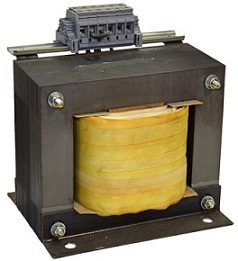
Dry Isolation Type
Ultra Isolation Transformers
These types of isolation transformers provide high levels of electrical isolation as compared to other normal isolation transformers. These transformers reduce the transmission of electric current drastically in between the i/p & o/p coils because it uses special construction methods & also materials. So that it helps in avoiding any grounding problems or unnecessary electrical noise occurred to affect the connected devices’ performance. These transformers are frequently utilized in research & sensitive medical applications to make sure the maximum level of precision.

Ultra Isolation Transformers
How to Choose an Isolation Transformer?
The selection of an isolation transformer mainly depends on the preferred result as well as the type of usage. The factors need to be considered while selecting an isolation transformer like the voltage, load requirement, number of phases, and location.
Voltage: The transformers are mainly used to change the primary power source’s voltage. This voltage will decide the input voltage of the transformer although transformers handle various voltages. After that, the o/p voltage can be selected depending on the requirements.
Number of phases: Decide if there is a single phase/three-phase requirement, after that choose accordingly.
Need to consider both the type and size of the load to address the L.F (load factor).
Need to consider whether the isolation transformer will be installed outdoors or indoors or next to any poisonous materials. Make sure that the transformer includes the necessary physical attributes to bear whatever the surroundings might involve.
What is the advantage of an isolation transformer?
- An isolation transformer reduces power surges and it protects DC signals from the power source to permit equipment to work without breaks so that the chance of property damage will be reduced from transient voltages.
- These transformers are very secure to use.
- These are extremely versatile & adaptable for a variety of communication centers, industrial power supplies, data collection, etc.
- These are very effective in decreasing noise.
- This transformer operates at high frequency so this type of transformer can be used as a pulse & a vibration transformer.
- They improve power quality.
- This transformer can be used for extremely high & very powerful voltage isolation.
- They have high performance & high efficiency.
Where is the isolation transformer used?
Isolation transformers are used for power supplies in sensitive equipment like computers, laboratory instruments, or medical devices.
What are the disadvantages of isolation transformers?
- Isolation transformers are costlier as compared to normal transformers.
- Once this transformer operates like a pulse transformer at low frequency then there is distortion in output or secondary waveform.
The saturation property of this transformer core decreases when it operates at a DC pulse signal.
Why isolation transformer is used in UPS?
The isolation transformer is used on the input supply of UPS to provide total neutral separation with the bypass supply.
What is a 3-phase isolation transformer?
A three-phase isolation transformer is a three-phase transformer including both the primary & secondary windings. Thus, the input power will be detached from the output power. These types of transformers are mainly used for changing the power supply, lighting & voltage, so it is extensively used in mining & industrial enterprises, airports, power plants, subways, and high-rise buildings with high fire security requirements.
Applications
The uses or applications of isolation transformers are listed below.
- An isolation transformer is used in pulse circuits for isolation.
- This transformer helps in decreasing harmonics as well as transients within electrical circuits.
- It provides electrical isolation between the power source & also equipment.
- An isolation transformer including a 1:1 ratio is utilized for security purposes in load conditions.
- This transformer is used wherever electrical isolation is required for medical equipment as well as some particular standard devices.
- These transformers are also used for secure troubleshooting & also test different components without moving the live circuit part that guards against hazardous voltage & electric shock.
- An isolation transformer separates the two circuits physically & electrically.
- This transformer’s purpose is to isolate the primary section of the switch mode power supply electrically.
- This transformer enhances the power quality of equipment.
- These transformers avoid capacitance that improves the connection between the primary & secondary windings which causes high sound frequency
- This transformer helps in transmitting isolated AC to a device for security, protection or to decrease the transient voltage surges & harmonics.
Please refer to this link to know more about Power Transformer.
Thus, this is an overview of isolation transformers, construction, working, types, and applications. These transformers provide total electrical insulation in between two circuits or systems and also help in protecting from electrical noise or surges. Here is a question for you, what is the current transformer?